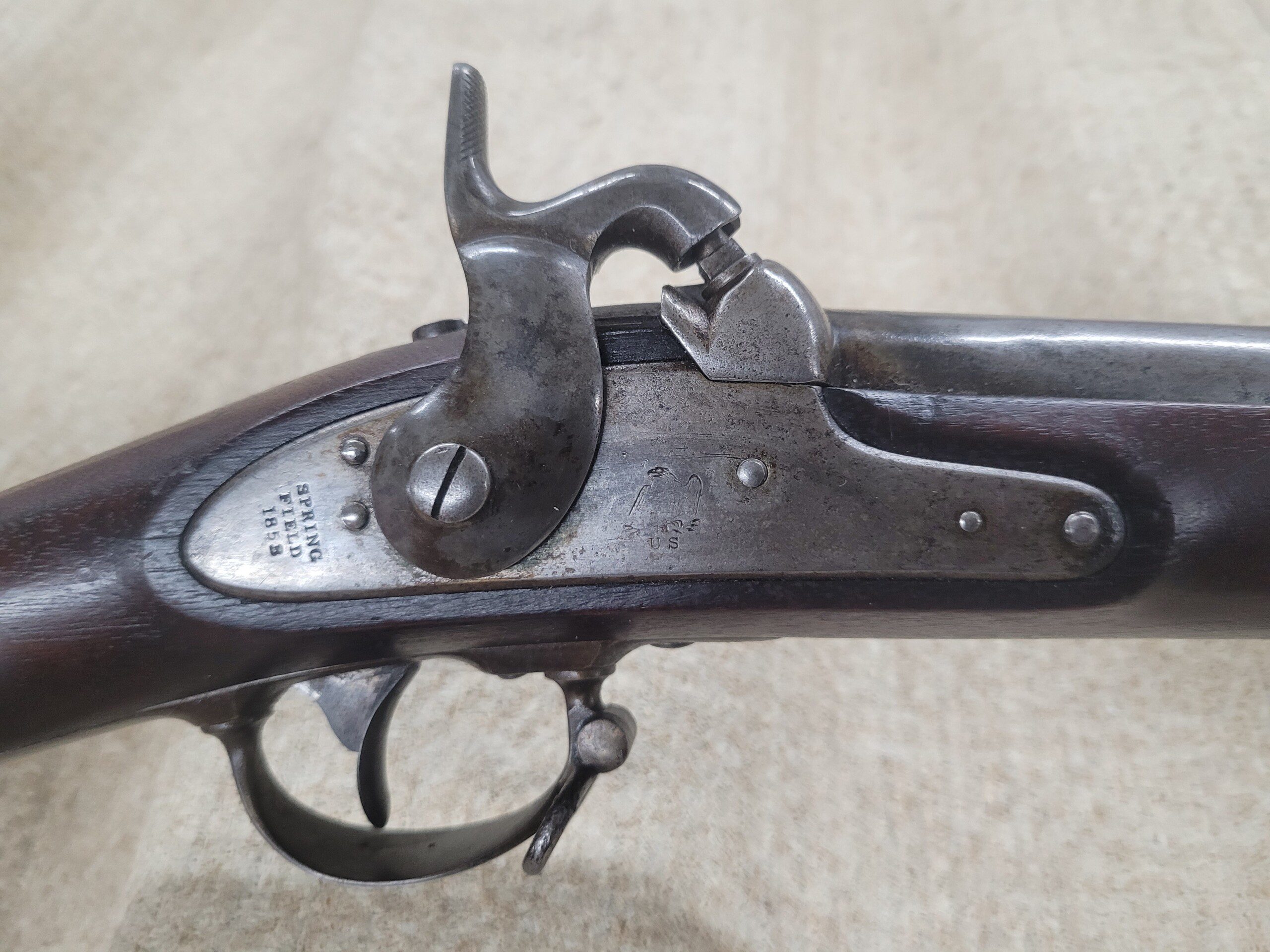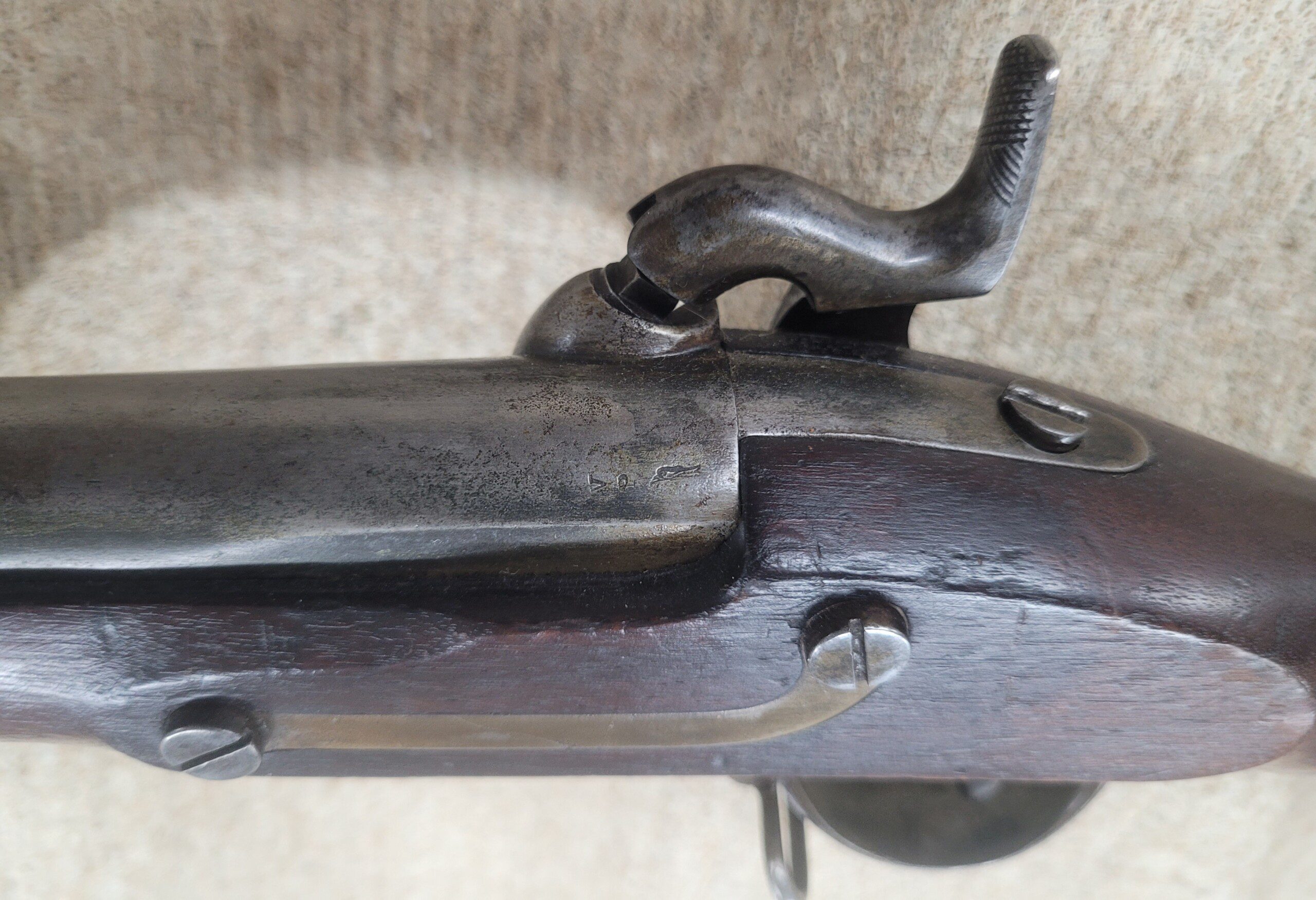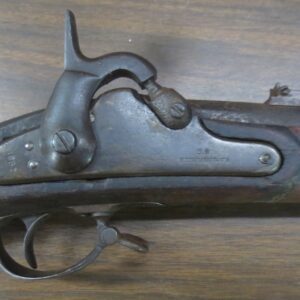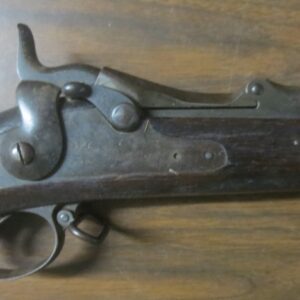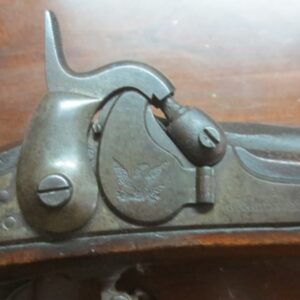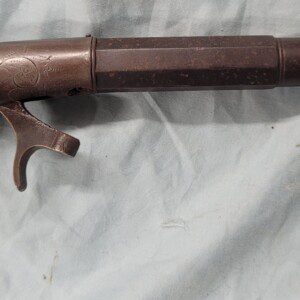Description
In May of 1851, the United States Ordnance Department authorized the manufacture of 2,000 percussion cadet muskets. The production of these muskets was necessary to supply various state military academies with arms under the Militia Act of 1808. The supplies of Model 1841 Cadet Muskets, which had been produced at Springfield between 1844 and 1846, had all been issued to the Military Academy at West Point, and only full sized percussion conversion muskets were available for issue to the states. These guns were considered too large and heavy for cadet use, and this resulted in the authorization to manufacture new cadet muskets at Springfield. The M1851 Cadet Musket was quite similar to the preceding M1841 Cadet Musket, both being .57 caliber smoothbore percussion muzzle loaders that were essentially scaled-down versions of the standard issue US infantry musket, the Model 1842.
Approximately 4,000 cadet muskets were ultimately produced but only a handful are known in actual rifle length—most had a 40” barrel. This particular weapon likely did NOT go to West Point as none of theirs were noted to be of the shorter variety.
Several other states received US Model 1851 Cadet Muskets during 1852, all of which appear to have been National Armory Bright. These states included: Alabama (245), Georgia (235), Kentucky (225), Mississippi (150), North Carolina (65), South Carolina (100) and Tennessee (80). In 1856, Virginia received 10 more US M1851 Cadet Muskets, and the state of New York received a total of 1,150 of the guns, with 150 shipping in 1855 and 1,000 in 1857.
The standard common example barrel was 40” instead of 42” (like the US M1842 musket), and the lock plate was from the smaller M-1847 family of percussion carbines, also called musketoons, which were slightly smaller than full sized musket locks. The stock was also proportionally reduced in overall size (mostly notably in the smaller buttstock and much slimmer wrist), and as already mentioned, the guns were produced in .57 caliber instead of .69 caliber.
